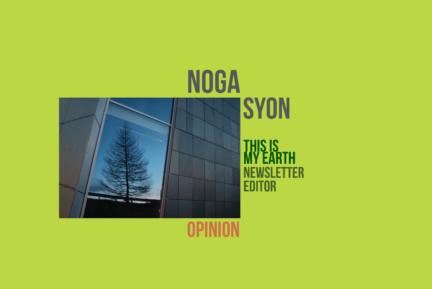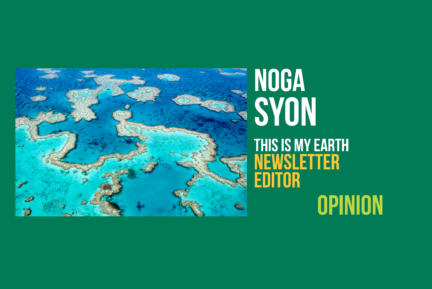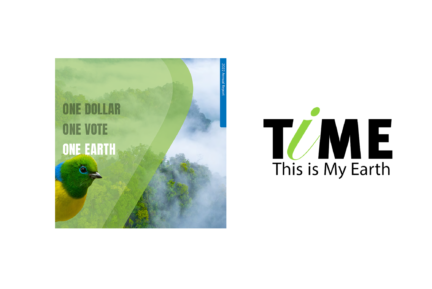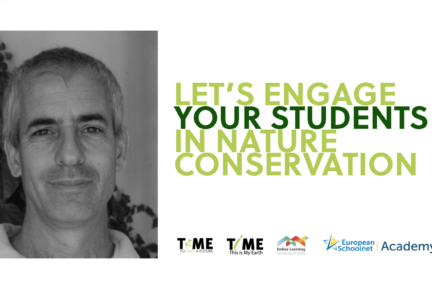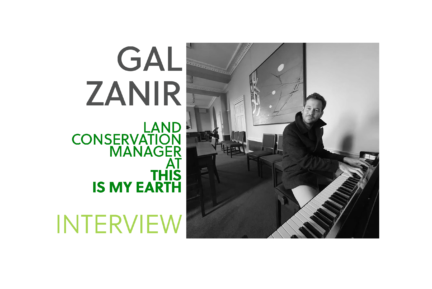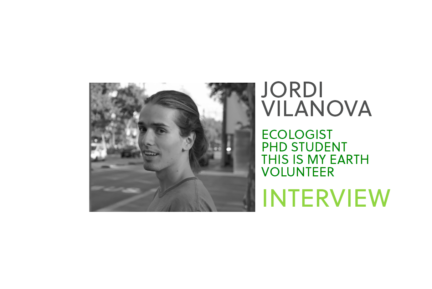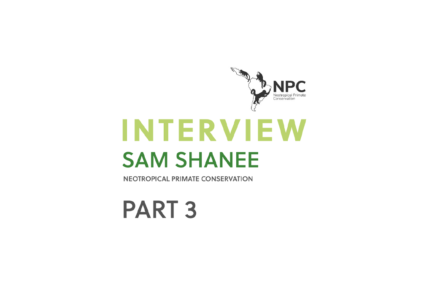
My family and I recently visited the Galápagos to mark the Bat Mitzvah (or coming of age) of my daughter Orly, who dreamed of seeing the islands’ endemic giant tortoises up close. To our amazement, we saw them on day one! In the highlands of the island of Santa Cruz, it’s surprisingly easy to spot the giant tortoises, grazing at the side of the road or among the cows in the pastures. Over the course of our trip, we were also thrilled to encounter many other endemic and native species, swimming with Green Sea Turtles and Galápagos Penguins; kayaking past Blue-footed Boobies and Spotted Eagle Rays; and admiring dozens of Marine Iguanas and Galápagos Sea Lions lazing on the beaches. The sea lion pups had recently been born and were terribly cute!
The Galápagos islands, as many of you know, is an ecosystem unto its own, located 1,000 kilometers off the coast of Ecuador in the Pacific Ocean. Moreover, its 19 volcanic islands (four of which are inhabited) host some species and subspecies unique to only that individual island. This discovery — specifically of the variety of beak shapes and sizes and differing behavior of finches resident on different islands — was the inspiration for Charles Darwin’s theory of evolution.

This unique region, I was pleased to learn, is intently focused on nature conservation, in part because ecotourism makes up a large proportion of its income (one pre-pandemic estimate put it at 80 percent). An astounding 97 percent of the archipelago is protected as part of the Galápagos National Park and Marine Reserve! Foreign tourists must each pay US$100 in cash directly to the national park upon arrival at the islands’ airports, and their bags are screened to prevent the introduction of invasive species. The national park has several programs dedicated to protecting threatened wildlife, including a long-standing breeding program for giant tortoises. Beaches and hiking trails are wonderfully free of litter, and I noticed that waste is sorted into compost, recycling, and garbage even in one of the smallest towns in the archipelago, Puerto Villamil, with a population of just 2,000.
Compared to many parts of the world, local and national governments in the Galápagos have clearly made conservation a priority. But credit must also be given to local residents and local and international scientists and NGOs, who have conducted research, supported conservation work, and pressured these governments to legislate for and fund conservation. For instance, UNESCO closely monitors conservation in the Galápagos because it is a World Heritage site. In 2007, the international organization put it on the list of endangered World Heritage sites and recommended a number of policies (and provided some funding) to mitigate the threats. Three years later, UNESCO reported that sufficient progress had been made to remove the Galápagos from its “danger list.”
Despite the evident efforts to protect nature in the Galápagos, over the course of our trip, I had several conversations with national park-certified guides that suggested that conservation in the region remains a work in progress.
Perhaps the most well-known conservation story in the Galápagos concerns the giant tortoises: in an effort to reverse centuries of mass killing (by humans and human-introduced predators, like goats and rats) and avert the threat of extinction, a captive breeding program was established as far back as 1965 at the Charles Darwin Research Station on Santa Cruz.
Decades later, with the program expanded to three breeding centers, the Galápagos can boast that the populations of nine (of 11) surviving subspecies of giant tortoise have increased and been returned to the wild. Nevertheless, the breeding program has not been without its challenges. Some of you may know that about ten years ago the last remaining Pinta tortoise, Lonesome George, died before successfully breeding. More recently, wildlife trafficking has been a significant threat: in March 2021, a smuggler was caught at one of the main airports in the Galápagos with 185 baby tortoises in their suitcase; in 2018, 123 were successfully stolen from a breeding center on Isabela island and smuggled to the mainland.

Endangered Galápagos penguins, the only tropical penguin in the world, face a different threat: their already small population is declining, primarily due to changing environmental conditions, likely attributable to climate change. More frequent El Niño years, when warmer waters around the Galápagos result in fewer fish for the penguins (and other marine animals) to eat, has led to dramatic declines in its population.
In 2010, scientists at the University of Washington constructed artificial nests for the penguins in an effort to boost their population and have been monitoring these nests ever since. However, Rico, one of the national park guides on Isabela, told us that these kinds of programs are controversial. Many naturalist guides in the Galápagos, he said, don’t think that we should interfere in what is a natural process of population decline; in other words, humans should not artificially support the penguin population in a part of the world where environmental conditions are less and less hospitable to the species.
The final conservation challenge we heard about on our trip is one very familiar to TiME supporters and conservationists around the world: population growth and the pressure to expand human settlement into natural areas.
There is ongoing debate in the Galápagos, and especially in the biggest town of Puerto Ayora, about whether the increasing local population should be given more land for settlement — at the expense of the national park. The population of the archipelago has grown substantially since the establishment of the national park in 1959 to more than 30,000, due to both natural growth and migration. Some migrants are drawn to the Galápagos to work in the tourist industry, which catered to almost 330,000 people in 2023. This influx of tourists, of course, also contributes to the pressure on land and natural resources. One of our taxi drivers, Edwin, who is originally from Ecuador’s capital, Quito, told us that he and two of his brothers moved to Santa Cruz a few years ago; “it’s paradise,” he said with a big smile, far removed from the increasing violence on the mainland of Ecuador in recent years.
My takeaway? Even in paradise, there are challenges. But I am grateful to local residents, naturalist guides and other experts at the Galápagos National Park and in local and international NGOs and universities for continuing to work through new and long-standing conservation problems in the Galápagos — just as I am grateful to the TiME community for its efforts to protect critical threatened habitat around the world. It takes a global village to protect biodiversity.

Liat Radcliffe Ross is TiME’s editor.
Please tell her what you think of the issues raised in this article at [email protected]
References
“Arribos anuales,” Observatorio de Turismo de Galápagos, https://www.observatoriogalapagos.gob.ec/arribos-anuales.
The Center for Ecosystem Sentinels, Galapagos National Park, and Global Penguin Society, “Penguins on the Equator: The Galapagos Penguin,” August 2022, https://galapagos.gob.ec/wp-content/uploads/2022/08/Penguins-on-the-Equator.pdf.
Discovering Galápagos, https://www.discoveringgalapagos.org.uk.
“Galapagos Islands,” UNESCO World Heritage Convention, https://whc.unesco.org/en/list/1/.
“Giant Tortoise Restoration in the Galápagos Islands,” Galapagos Conservancy, https://www.galapagos.org/conservation/giant-tortoise-restoration/.
Abbey Interrante, “Over 100 Baby Giant Tortoises Were Stolen in the Galapagos Islands,” Newsweek, Oct 6, 2018, https://www.newsweek.com/over-hundred-baby-giant-tortoise-stolen-1155891#:~:text=On%20September%2025%2C%20123%20baby,subspecies%20of%20the%20Galapagos%20tortoise.
Clara Steel Miguelez, “Galapagos Penguin: Endangered Animals Spotlight,” Earth.org, Sept. 8, 2022, https://earth.org/?endangered-species=galapagos-penguin-endangered-animals-spotlight.
Cesar Eduardo Neira, “Case Study on the Galapagos Islands: Balance for Biodiversity & Migration,” Environmental and Earth Law Journal, Vol. 6 (2016), https://lawpublications.barry.edu/cgi/viewcontent.cgi?article=1049&context=ejejj.
Julia W. Novy, “Incentive Measures for Conservation of Biodiversity and Sustainability: A Case Study of the Galapagos Islands,” UNEP, 2005, https://www.cbd.int/doc/case-studies/inc/cs-inc-ec-galapagos-en.pdf.
“Outrage at Massacre of Giant Tortoises in Galápagos,” Galapagos Conservancy, October 13, 2021, https://www.galapagos.org/newsroom/outrage-at-massacre-of-giant-tortoises-in-galapagos/.
Christine Peterson, “The Galapagos penguin, one of the world’s rarest, sees a glimmer of hope,” National Geographic, Oct. 13, 2022, https://www.nationalgeographic.com/animals/article/galapagos-penguin-sees-a-glimmer-of-hope.
Nicolette Reale, “The Galápagos Islands: Economy over Ecosystems,” Harvard International Review, Oct. 14, 2022, https://hir.harvard.edu/the-galapagos-islands-economy-over-ecosystems/
“Safeguarding Galápagos Penguins from Climate Change,” Galapagos Conservancy, https://www.galapagos.org/projects/saving-species/safeguarding-galapagos-penguins-from-climate-change/.











